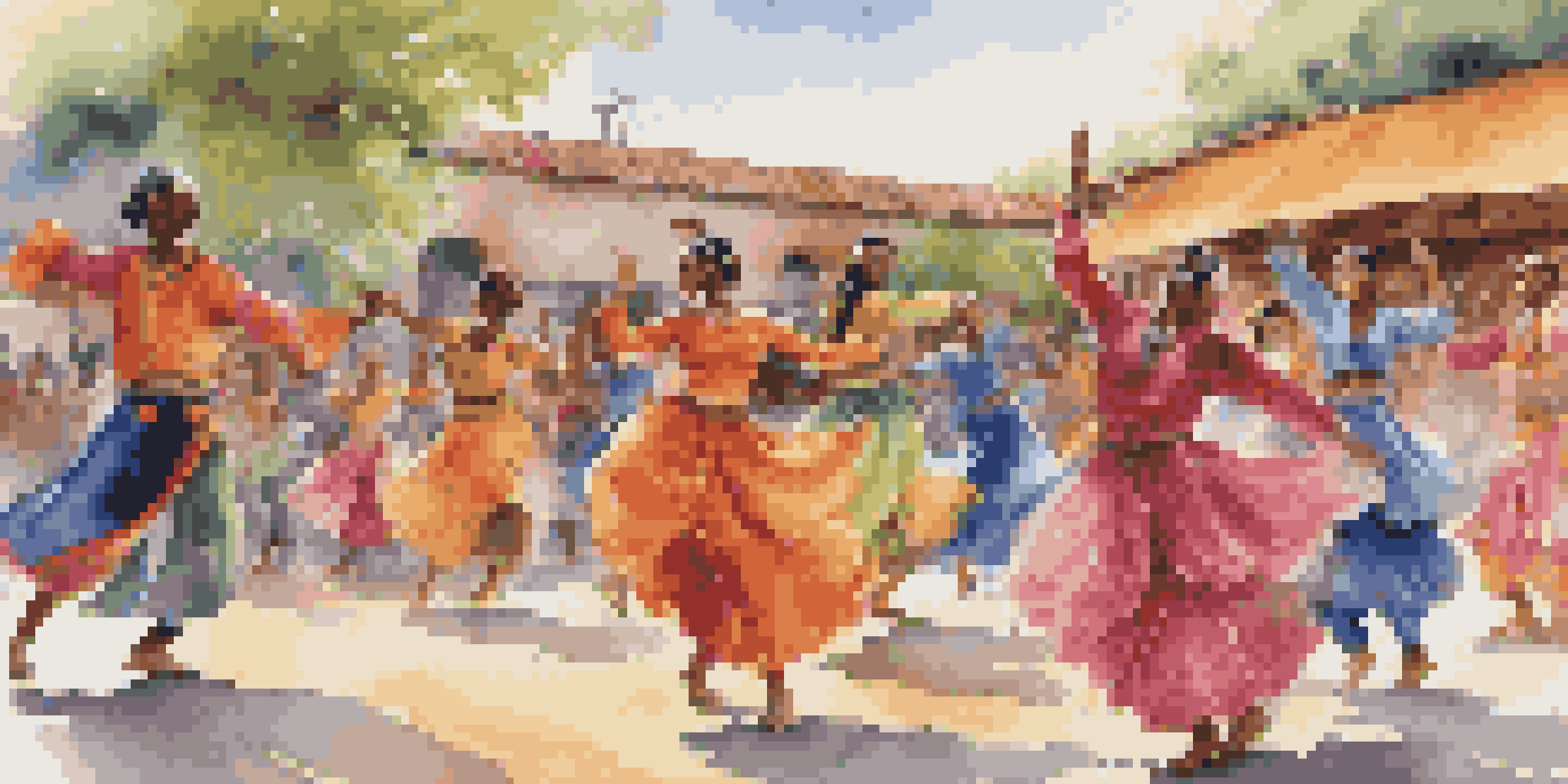The Influence of Cultural Context on Dance Improvisation

Understanding Dance Improvisation Across Cultures
Dance improvisation is a spontaneous form of expression that varies greatly across different cultures. Each cultural context provides unique influences, shaping how individuals interpret movement and rhythm. For instance, in African dance, improvisation often incorporates community interactions, reflecting its communal roots. In contrast, Western styles may emphasize individual expression, showcasing personal style and technique.
The Role of Cultural Heritage in Movement Choices
Cultural heritage plays a vital role in influencing the choices dancers make during improvisation. Dancers often draw upon their backgrounds, traditions, and experiences, which inform their movement vocabulary. For example, a dancer with a strong background in ballet may incorporate classical elements into their improvisation, while someone from a hip-hop background might favor sharp, urban movements. This blend of influences creates a rich tapestry of dance styles.
Cultural Influence on Dance Improvisation
Dance improvisation is deeply shaped by cultural heritage, with dancers reflecting their backgrounds and traditions in their movement choices.
Community and Collective Expression in Dance
In many cultures, dance is a collective activity that fosters community bonds. This shared experience often leads to spontaneous improvisation that reflects the group's energy and emotions. For example, in traditional Indian dance forms, improvisation can occur during group performances, where dancers respond to each other's movements. Such interactions enhance the overall performance, making it a living expression of the community's spirit.
Cultural Symbols and Their Impact on Movement
Every culture comes with its symbols and meanings that can influence dance improvisation. Dancers might incorporate gestures or motifs that signify particular cultural stories or beliefs. For instance, in indigenous dances, specific movements may represent elements of nature, such as animals or seasons, grounding the improvisation in cultural narratives. This connection enriches the dance, making it more than just a series of movements.
Community Enhances Dance Expression
In many cultures, dance is a communal activity that fosters a shared experience, leading to spontaneous improvisation that embodies the group's collective energy.
Emotional Expression and Cultural Context
Emotions play a critical role in dance improvisation, and cultural context shapes how these emotions are expressed. In some cultures, emotional expression in dance may be more restrained, while in others, it can be exuberant and free. For example, traditional Japanese dance often emphasizes subtlety and grace, whereas Latin dances might celebrate passion and vibrancy. Understanding these emotional nuances can enhance the improvisational experience.
The Influence of Globalization on Dance Improvisation
Globalization has significantly impacted dance improvisation, blending diverse styles and cultural elements. Dancers today are exposed to a myriad of influences, allowing them to create hybrid forms of improvisation. This fusion can lead to innovative expressions that reflect a globalized world, yet it can also challenge traditional practices. Dancers must navigate these dynamics, balancing authenticity with contemporary trends.
Globalization Blends Dance Styles
The influence of globalization allows dancers to combine various cultural elements, creating innovative hybrid forms of improvisation while navigating the balance between tradition and modernity.
Training and Cultural Context in Improvisation Skills
The way dancers are trained also varies across cultures, influencing their improvisational skills. Some cultures emphasize structured training, while others may focus on experiential learning and community participation. For instance, in many African dance traditions, learning often happens through participation in community events rather than formal classes. This approach can lead to more instinctive and organic improvisational styles.
Future Directions: Embracing Cultural Diversity in Dance
As the world becomes more interconnected, embracing cultural diversity in dance improvisation is vital. Dancers can learn from various traditions, enriching their creativity and expression. By respecting and incorporating diverse cultural elements, dancers can create more inclusive and dynamic performances. This forward-thinking approach not only honors traditions but also fosters innovation in the art of dance.